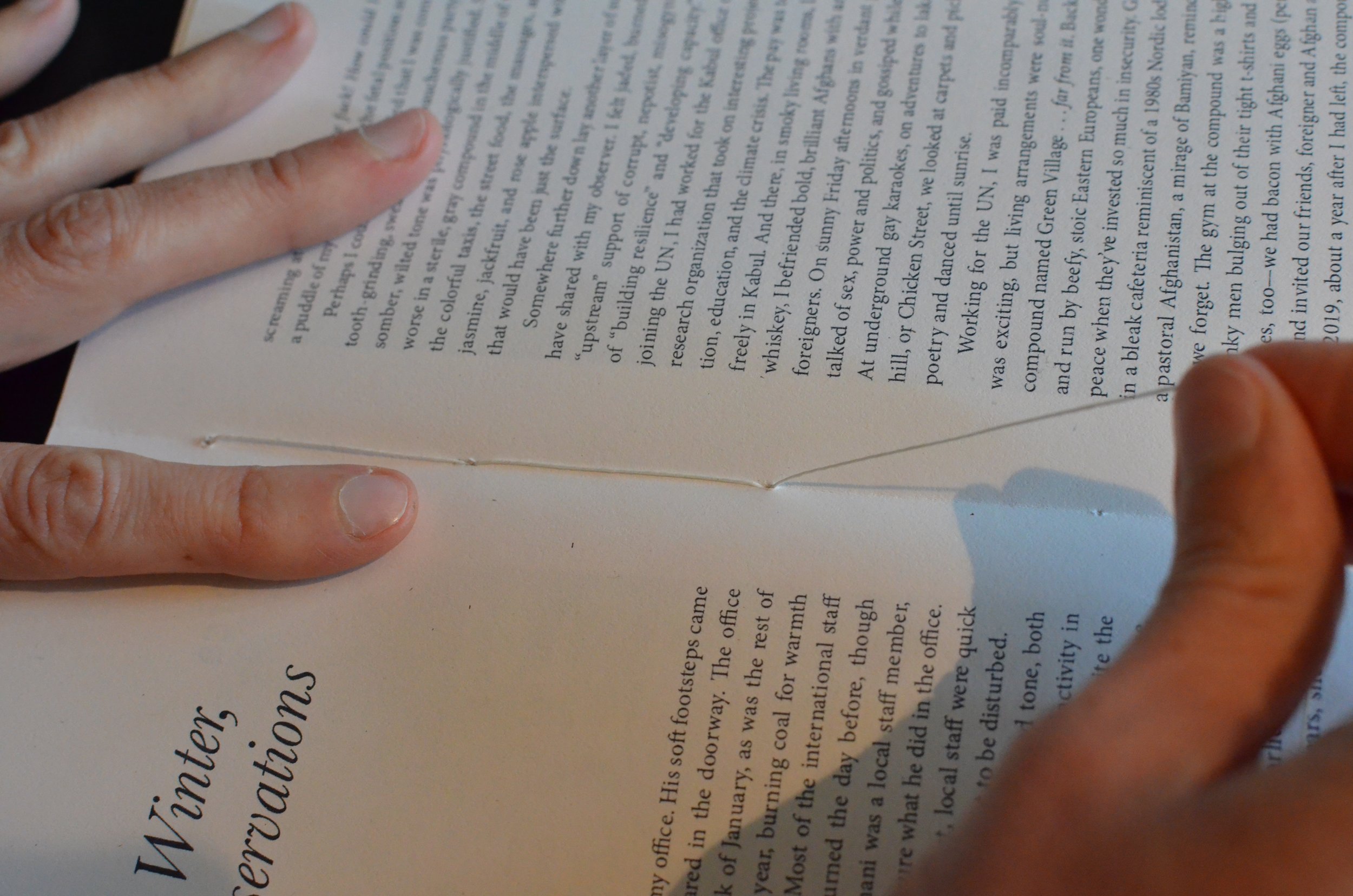Publications

Photos by Bill Newton







Exoterica: An Anthology
With Cantine Press’s inaugural publication, we wanted to make a book that embodies what we care about. The two resulting editions—a hardcover edition bound by hand, and a paperback edition—reflect this commitment at every stage, from our call for submissions to how we edit, print, bind, and sell.
Encouraging our community to make art.
We think every person is a fount of creativity. Whether someone identifies as a “writer” or simply writes, Exoterica was conceived for them: put something out there, for everyone. The creative act is what matters, whether it reaches a single reader or transcends generations.
Bringing together voices from around the globe, but rooted in our Bay Area ties.
As humanists, we believe in both the universal and the particular. The Bay is our particular: that golden maw that has inspired and devoured generations of artists, immigrants, dreamers, builders, and profiteers. Each place has its own particular, and yet we discover colorings of key universals across geography and history. With Exoterica, we wanted to reflect this dual truth; thus, our Bay Area comrades feature alongside far-flung friends.
Chipping away at the hegemony of the English language.
This one is still a work in progress. We invited submissions in English, French, and Spanish, since these are the languages we can work in. We think the US needs to print more writing in languages other than English, to reflect our polycultural society. Ultimately, only one piece in the original French appears in Exoterica. We plan to make this piece available in English on our website in 2025, and we will continue to accept submissions in French, Spanish, and English for future publications. We invite editors and writers keen to work in another language to contact us so we can expand the press’s language and translation capacity.
Blending the book arts and the literary arts.
Publishing today is an art of speed. With a few notable exceptions, most presses don’t have time to play with the art of the book itself. But we love the tactile, visual, and auditory experience of the book—the rub of a page turn, the crack of a freshly opened cover, the neatly punched letters down the spine squinting at us from the bookshelf. We want our readers to experience the aesthetic of the book anew, and in doing so pay homage to the book artists who have, over the ages, brought us this brilliant and beautiful technology for packaging and sharing human thought. Our Special Edition of Exoterica is lovingly handbound, and close to a dozen folks chipped in at various stages of folding, trimming, punching, sewing, glueing, and stamping. We also chose to print our Special Edition using Risograph, a printing technique that creates unique ink textures and color combinations that cannot be easily reproduced or digitized.
Collaborating with local printers, binderies, and studios.
We didn’t want to contribute to the accelerating shutdown of small printers and binderies across the US. We also wanted the book to look and feel one-of-a-kind. No better way to accomplish both of these goals than by partnering with local printers and studios.
Our hand-bound edition is risograph printed by Chute Studio in Oakland. They do really cool book art and zine stuff. We learned how to bind books by hand thanks to the San Francisco Center for the Book, who also provided access to their bindery so we could do very niche (dare we say, esoteric) things like foil stamp the covers.
Our paperback edition is printed by Evergreen Printing, an Oakland-based union print shop. You've never met a more meticulous print shop, or one that will go to greater lengths to find a local bindery that is disciplined with their application of glue.
Prioritizing economic and environmental justice over profits.
Most books are printed and bound at a handful of mega-factories on brand new paper produced under dubious environmental and labor conditions. We’re not into that. It’s more expensive, but we made sure to use recycled paper and work with Oakland-based print shops, one of whom is a card-carrying member of the IWW. Additionally, risograph printing is much more environmentally friendly than conventional printing—the method uses significantly less energy, as well as soy-based (non-toxic) inks and plant fibers.
We also think that artists should be compensated fairly for their work. We pay every contributor, and are committed to finding more ways to support them. Rest assured that purchasing a book from us means valuing the labor of everyone involved in the publishing process, and minimizing your environmental footprint while doing so.
